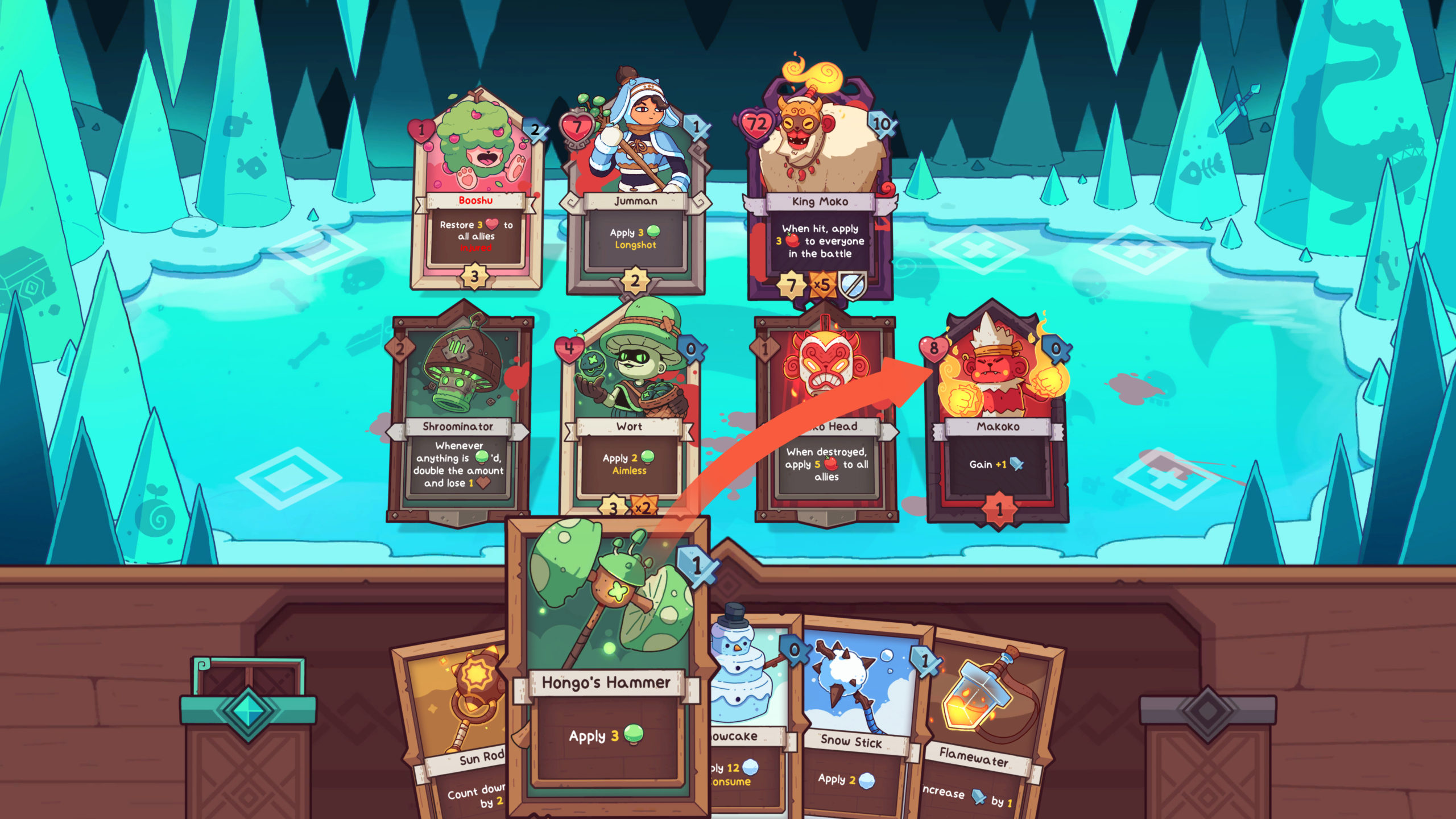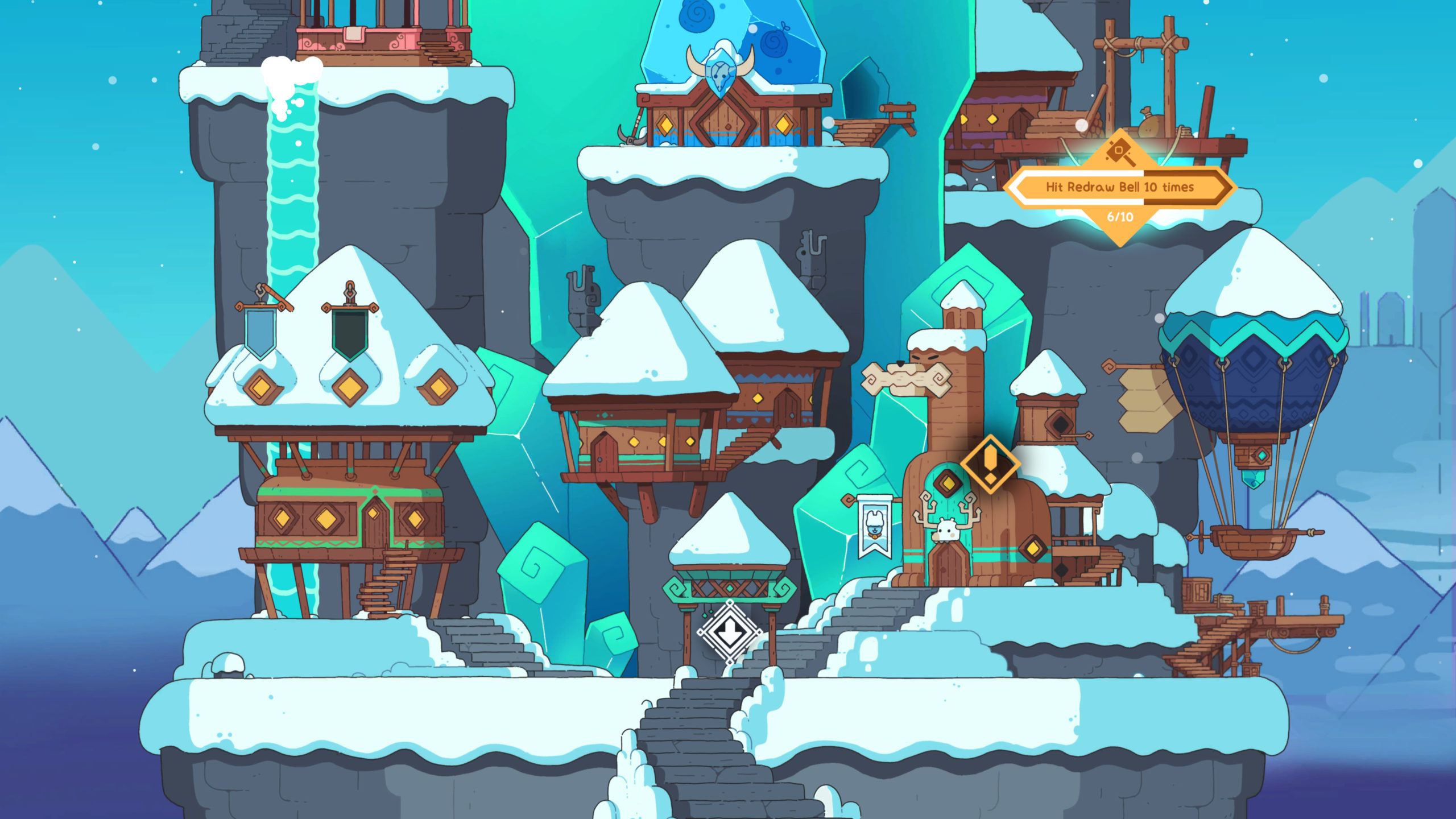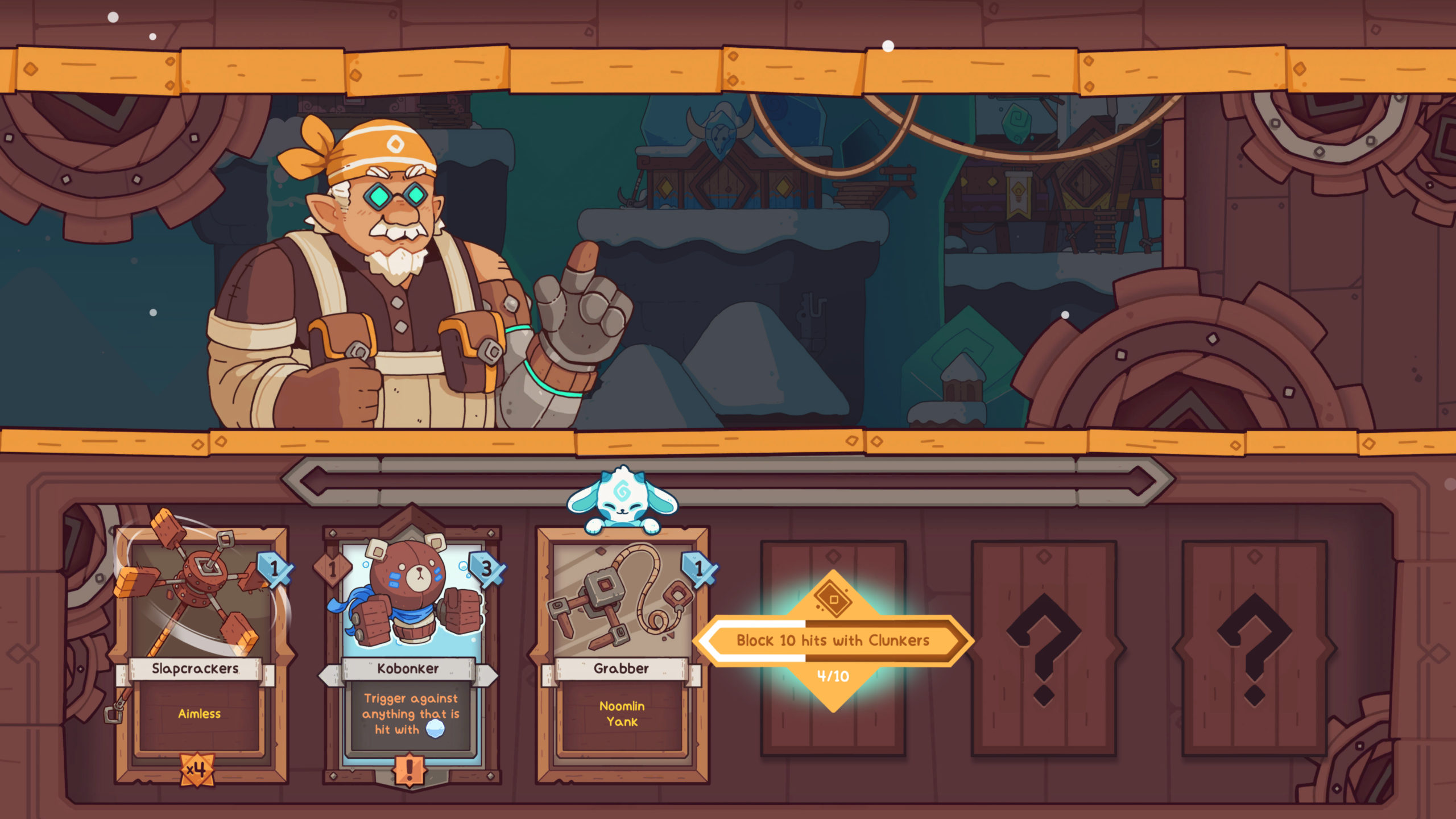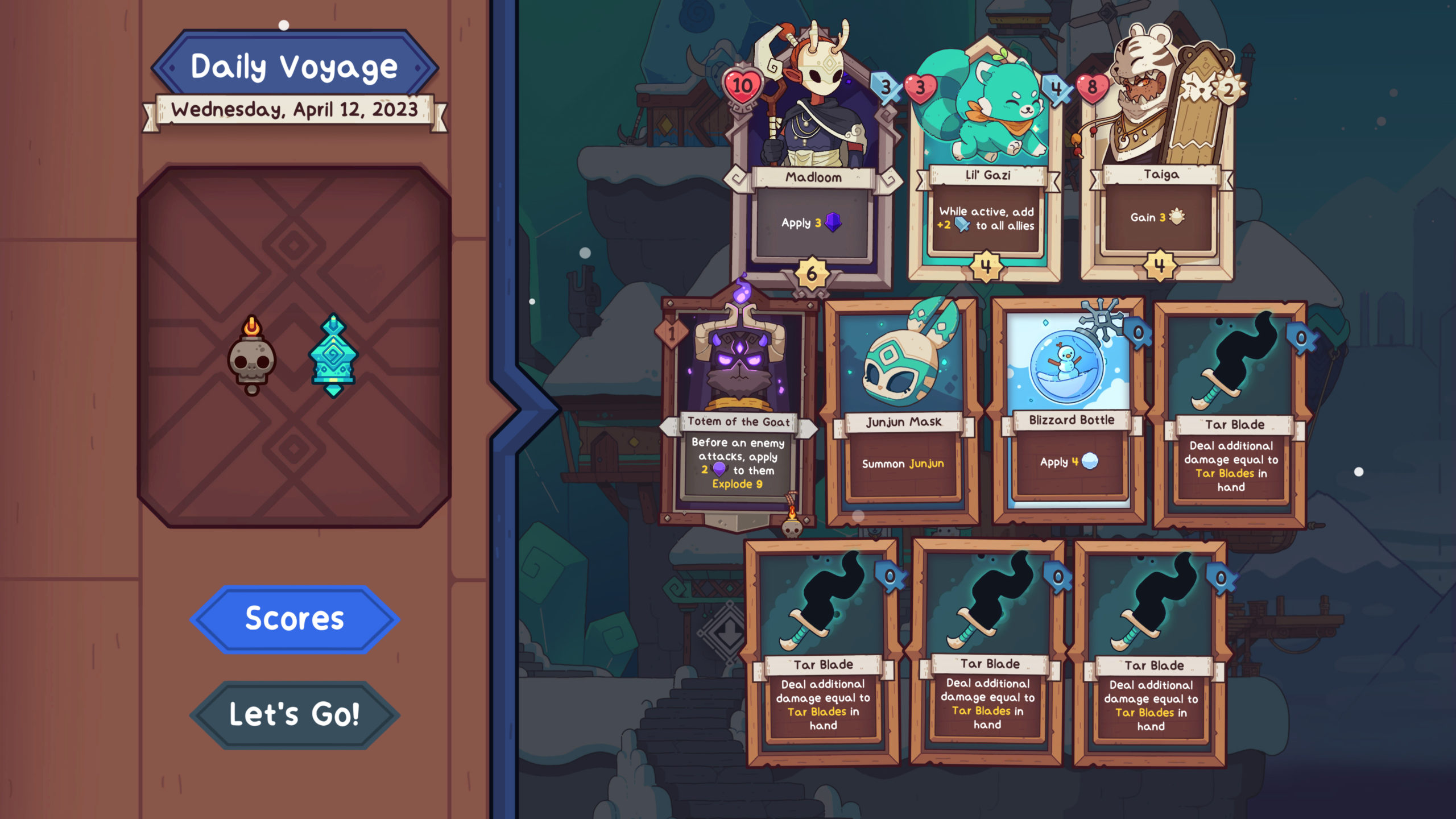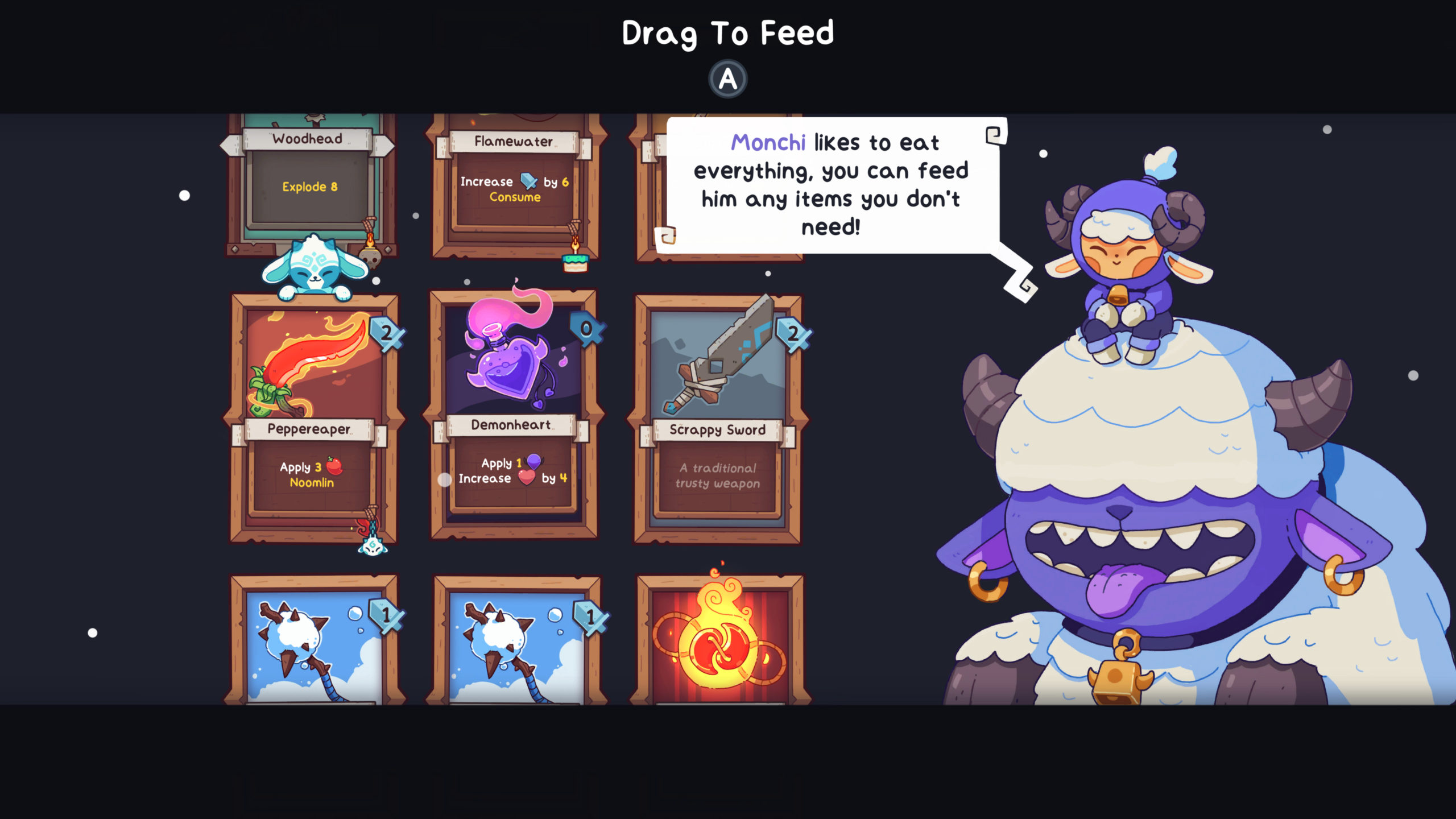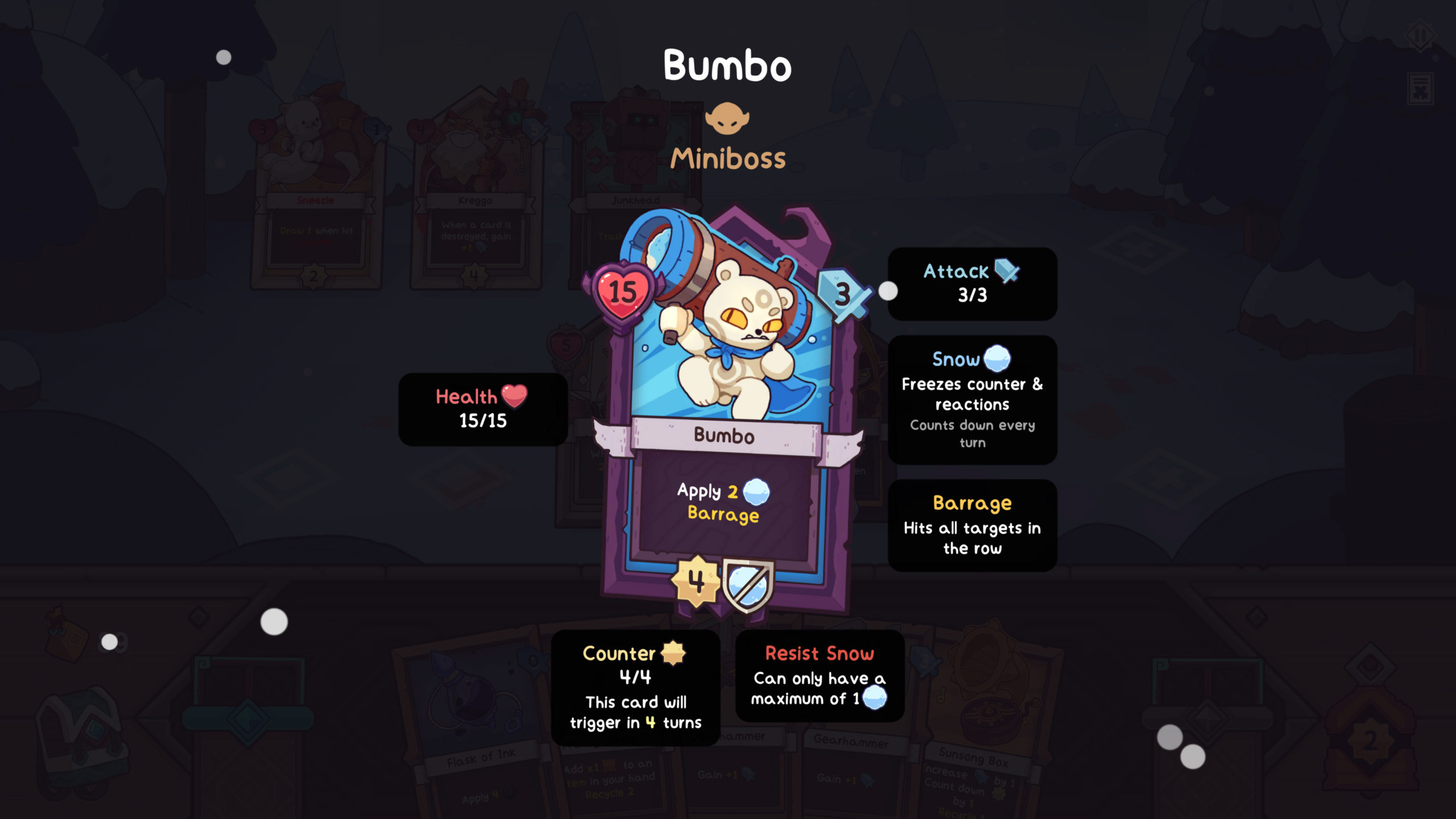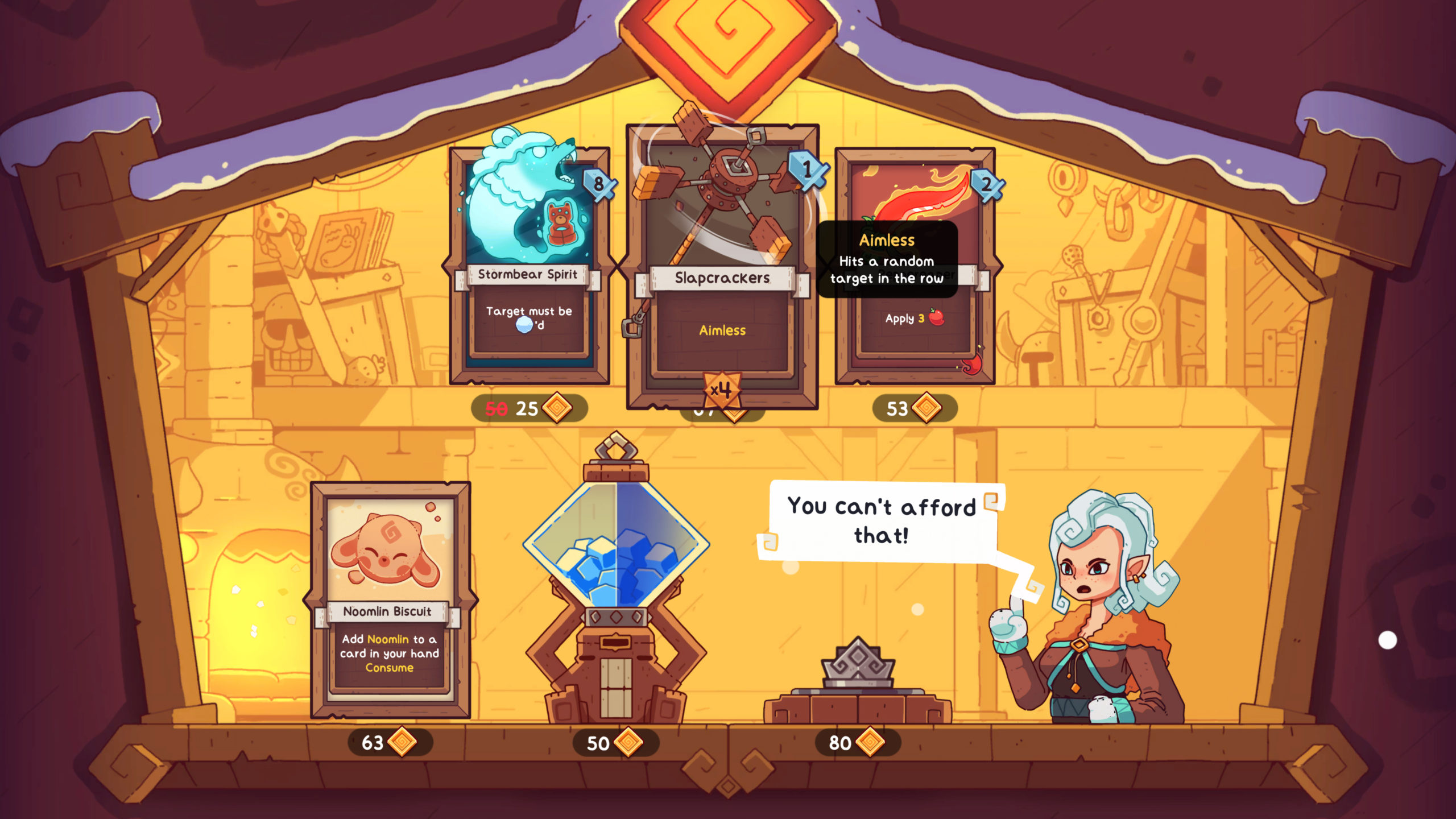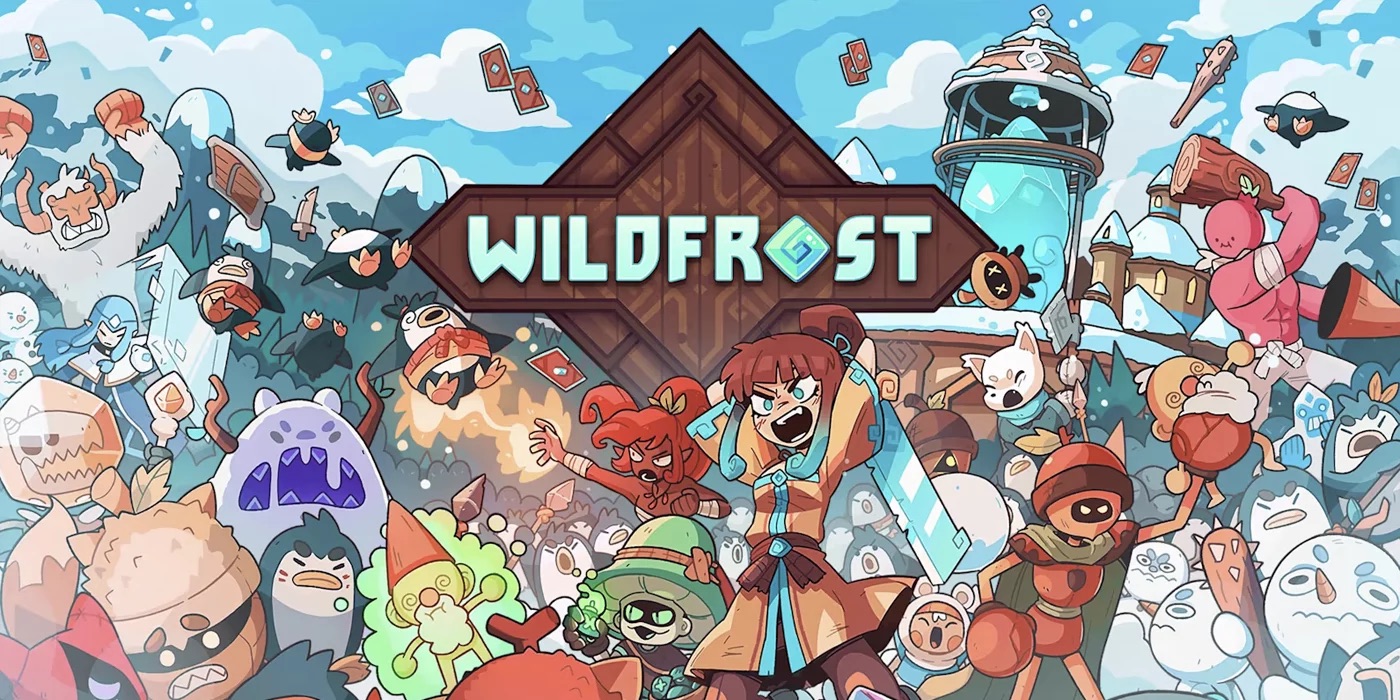Let’s kick some ice.
Arnold Schwarzenegger, a bad movie that relies too heavily on ice puns.
Wildfrost by, Deadpan Games and Gaziter is a roguelite deckbuilding game in a style popularised by Slay the Spire. There are lots of games of this ilk but Wildfrost stands out from the crowd with its own twists and turns. By implementing mechanics like lanes, card positioning and countdown clocks on cards, alongside some of the more familiar deck building classics, the devs have refreshed the format without killing its soul. All wrapped up in a clean but maybe too cutesy art style, simple but effective animations round out a well polished experience that’ll probably scratch that deck building puzzle-itch without leaving you out in the cold (ice joke, let’s keep this going eh?!)
At A Glance
| Scores | |
| Visuals | 8 /10 |
| Sound | 8 /10 |
| Gameplay | 9 /10 |
| Overall | 9 /10 |
| Positives | + A great challenge + Lots of combos to find + Audio and visuals on point |
| Negatives | – Can be unfair – Needs a few balance tweaks – No multiplayer |
| Price (When Reviewed) | £15.07 (10% off) |
| Our Playtime | 30 hours |
| Version Tested | 1.0.2 |
| Available On | Nintendo Switch, PC |
The story of Wildfrost takes place on a frozen world struck by eternal winter, with the last few survivors holed up in a town of oddballs. In the theme of roguelites, you take on runs – attempts to complete the game from a standing start, knowing that you’ll likely fail but hoping you might overcome a sub-task that gives the next run that little bit more of a chance to succeed. Each run starts with your hero setting off on an expedition to restore the sun (no pressure). As you trudge across the snow you’ll engage in a series of combat encounters, culminating in an attack on Wildfrost’s big bad, The Frost Guardian.
The choice that sets the theme for your entire run is selecting your leader. After some tutorials you can select from three different types of leader, each with their own randomised stats and abilities. Each of the three come from a different tribe, which starts with its own base deck and affects which flavour of card you may find as you go. If you’ve played Magic: The Gathering, imagine picking a blue deck and knowing that you’re going to get lots of counterspells.
You start your run with a deck associated with the hero of your choice. The Snowdwellers, who represent a fairly vanilla experience (heh, ice cream joke). The Shademancers excel once they start to snowball (ice pun! Anyone keeping score?), but needing more setup, they can easily get wiped out before you get a chance to execute your combos. The last tribe are The Clunkmasters, a bunch of gnomes riding wooden mechs and throwing bombs. I know what you’re thinking and you’re right, they’re the best clan, but you should give the others a chance too.
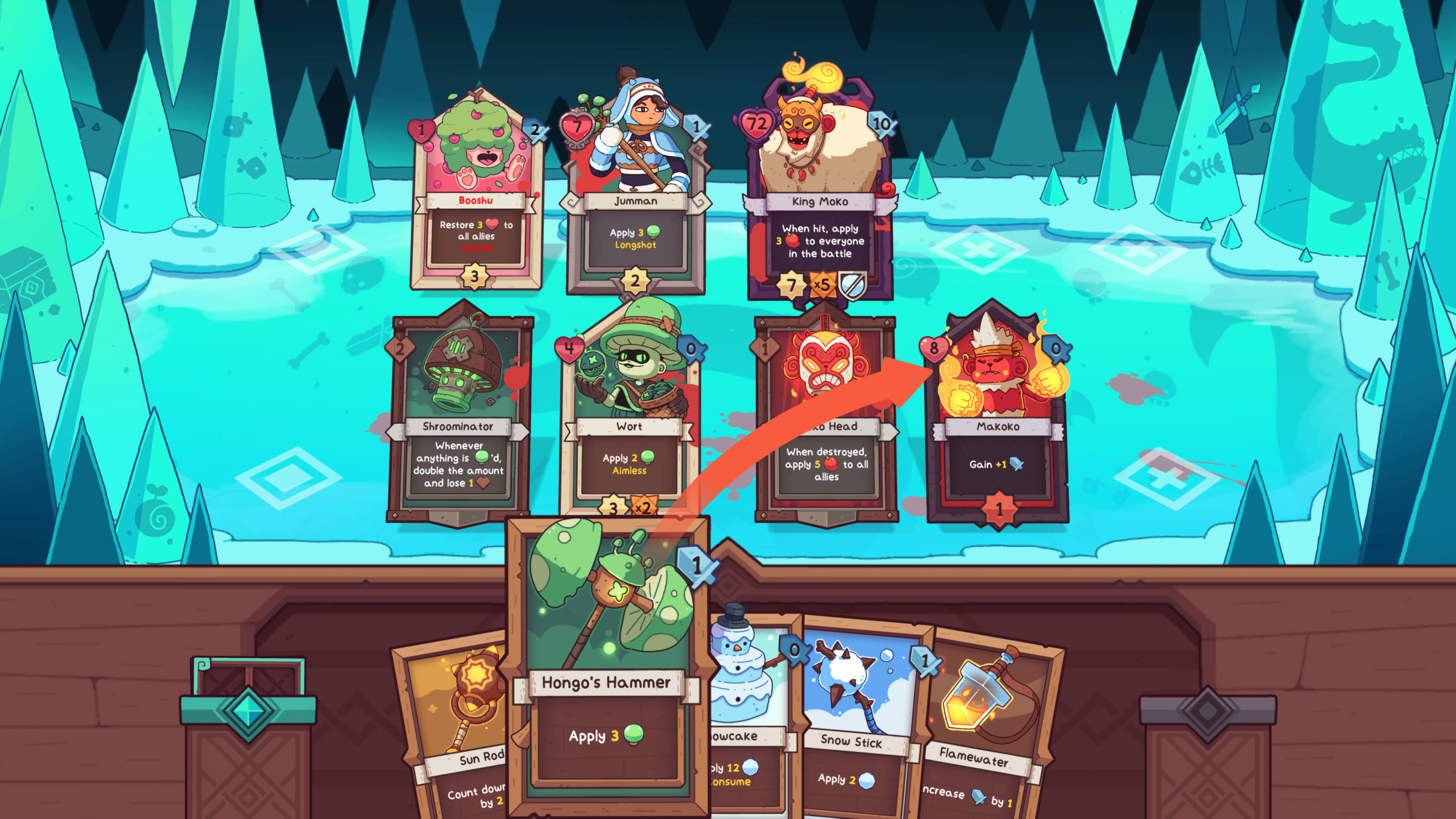
With your leader selected, the first event will always be a combat encounter. Wildfrost mixes up the deck battling format by laying out the board in a two lane system with an upper and lower lane. You start with your leader in play and perhaps some companions. The end of a round is what drives the key mechanic Wildfrost brings to the table – cards on the board typically have a turn counter which ticks down by one each time you play a card, ending the round. When a card’s turn counter reaches zero they’ll perform their attack, hitting the front-most opponent card in the same lane – opponent cards all attack first though so you need to be sure you can take the hits. Your companions taken off the board through damage will become injured, reducing their stats in remaining encounters unless they can be healed. While that’s manageable, if your leader is ever removed then that’s the end of your run – game over.
The core gameplay loop here is to watch out for incoming attacks from opponent cards so that you can re-shuffle your board to tank incoming attacks (or to try and stack up your team to slap an enemy silly). Your opponent won’t be doing the same as you though; they don’t have a hand of cards and can’t reshuffle their side of the board – they simply set up opponents in each encounter, adding more and more in a set of waves as the rounds progress. They become more of a puzzle to solve than an actual thinking opponent but remain an engaging challenge .
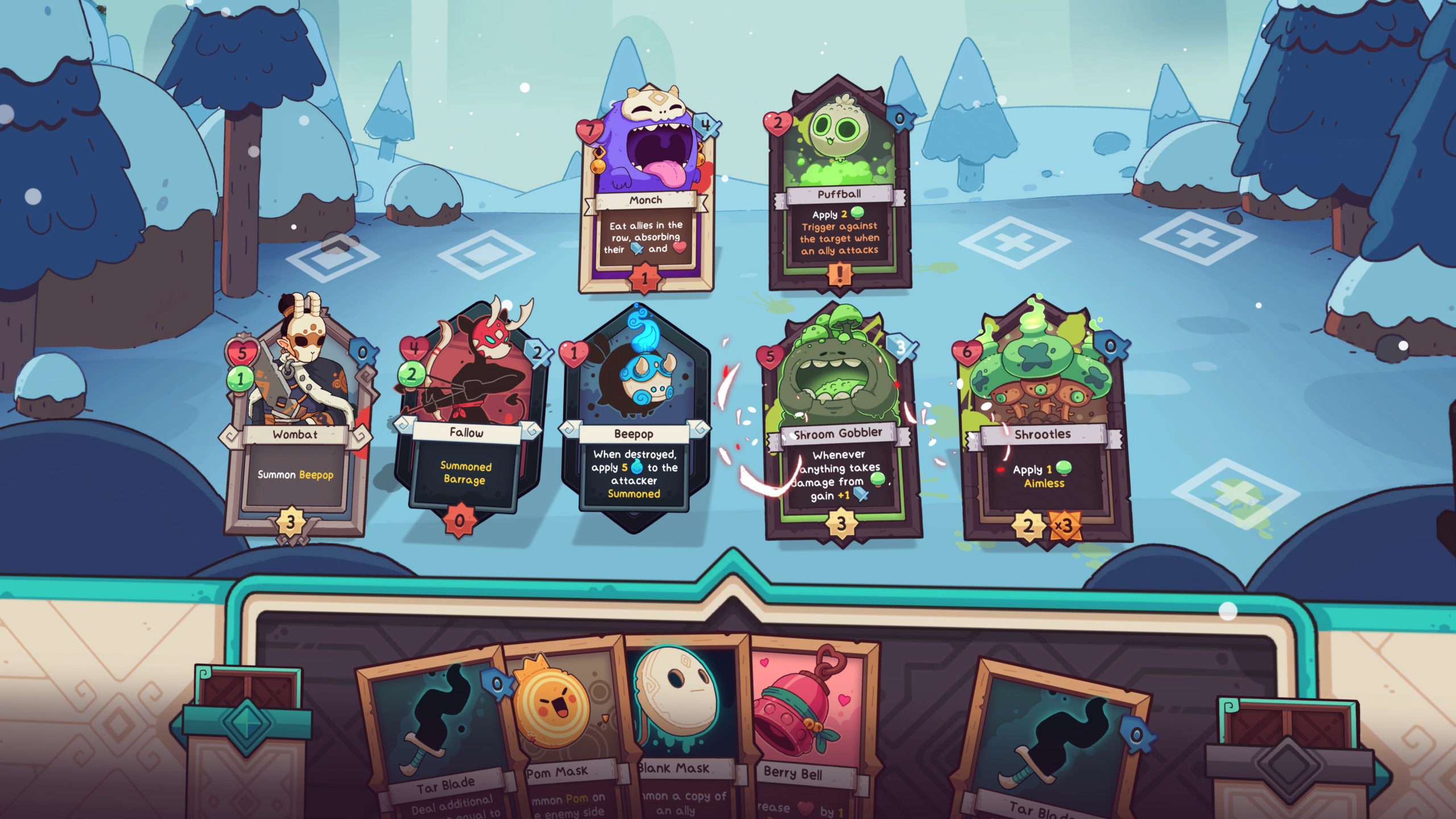
After your first victory things chill out a little bit (yep, that’s a good one). You may then select from two branching paths on the map screen. You can see as far forward as the next combat encounter where the paths will converge once again. Each path will have two pickup sites before the next combat node, and they’ll offer some sort of upgrade or bonus to your run. This could be cash, called blings, or a shop where you can spend those blings. In another path, there’s maybe cards to add to your deck or a charm which is a permanent upgrade for a card. You can see the types of pickup site on the map before you commit so you will have to weigh up your options to try and find the optimal path to plug gaps in your deck. This is where you find the secret sauce in Wildfrost. Adding companions with special traits and then finding some synergy with a charm or card-effect to try and ‘break’ the game is how you’re going to make it to the end and hopefully restore the sun.
Let’s put hope aside for now though (yes, I’m a Millennial). You’re going to lose. I bounced off more runs of this game than I’d care to admit, though each time getting a little better at understanding the importance of spotting threats in advance, what mechanics are ‘scary’ and which enemies can be functionally ignored. And with each run, you may complete some of the hub town tasks which unlock additional cards, charms or pickup sites to find in future runs. Sometimes these are more powerful options, but mostly they just open up the versatility of synergies allowing you to find more combos.
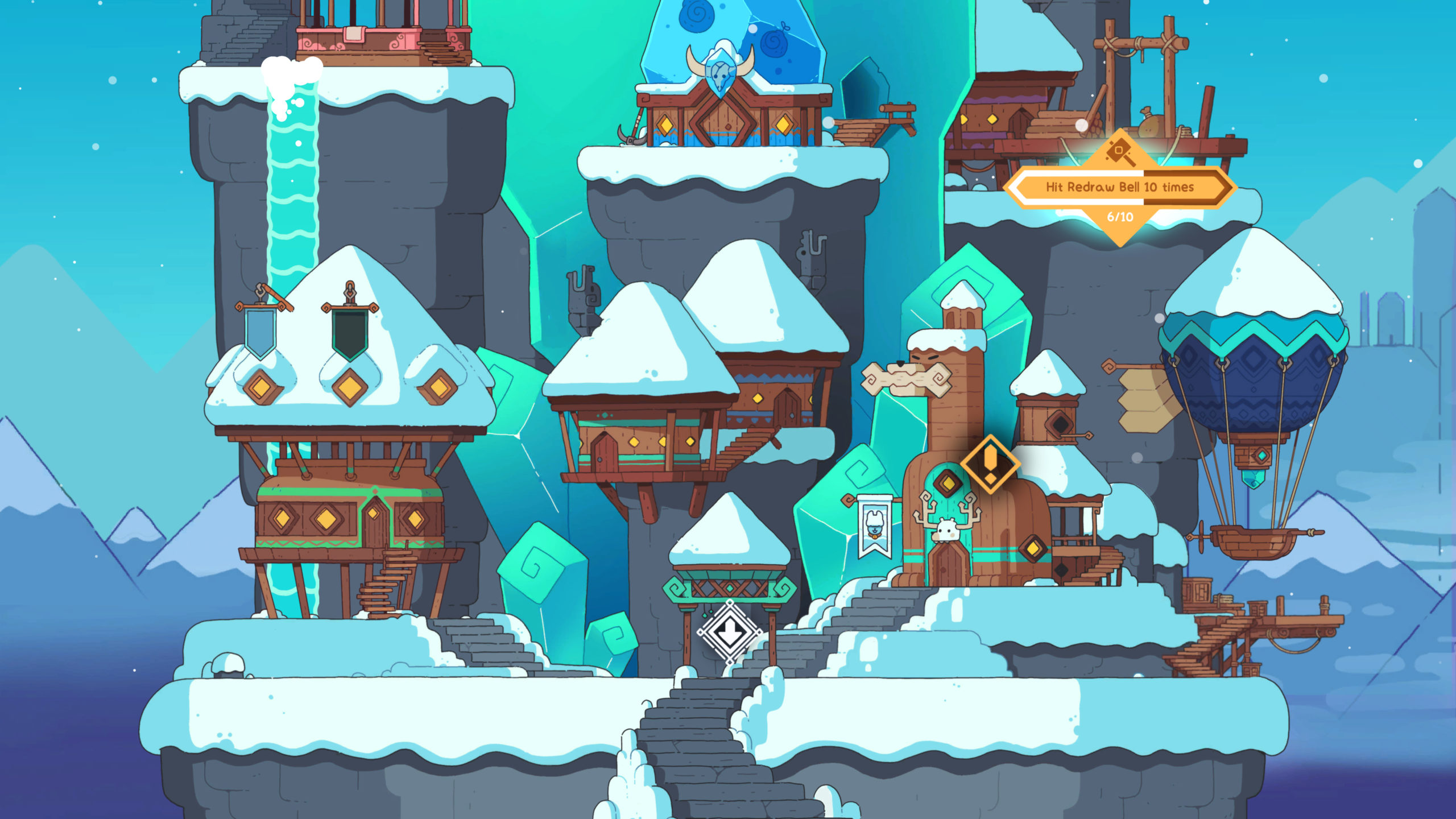
It does feel like there’s a missed trick here, as even without the tribe restrictions the spectrum of combos has been artificially reduced. Perhaps the devs found in play testing that the card pool was too watered down in each type of mechanic for you to consistently hit combos, but whatever the reason, it feels like I’m being forced to ‘discover’ combos that have been carefully constructed and approved by the dev team rather than legitimately crafting a successful deck entirely on my own.
This funnelling into approved synergies compounds with a serious problem; eventually you will find, then lean on, a set of synergies or mechanics which drastically increase how often your team of companions strike opponents. Not doing this will mean you just can’t remove enemies consistently enough and you’ll probably lose in the later combat encounters. As you play there’s a good chance you’ll get a combat which starts with an opponent called Marrow. This one enemy directly punishes you for utilising any of these tactics you need to win other combats. There are very few ways to consistently mitigate this opponent’s effects with the only effective counter to Marrow gated behind one particular tribe.
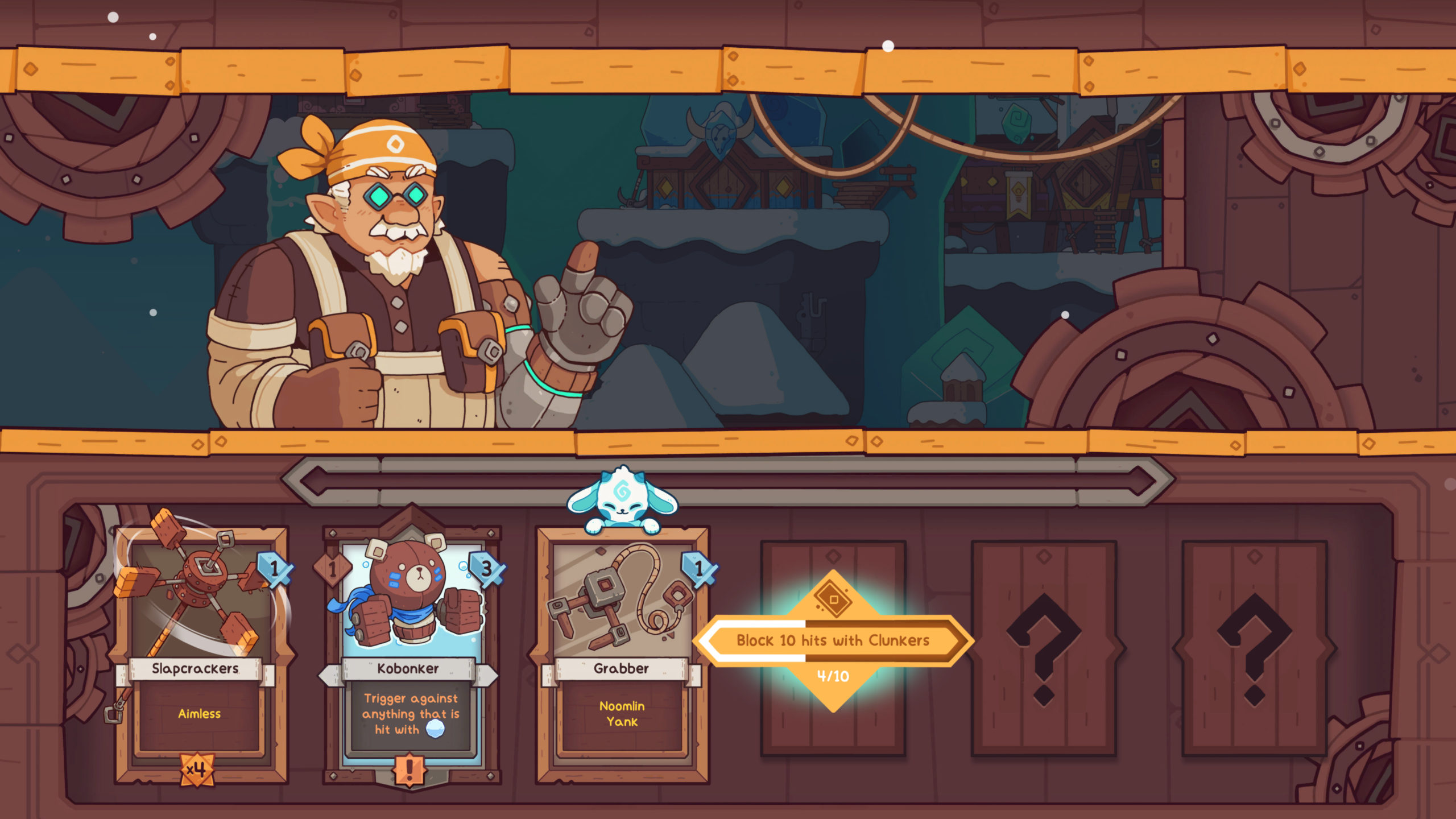
Hindering your chances of thinking your way around this and other challenges, the developers have clearly decided to cheat some synergies out of existence for particular cards. There are combos with certain cards and charms which, as written, should make some options absolutely overpowered but they simply don’t do what they say they will. Unfortunately you’ll find runs ending because some unfair roadblock stole away your win and you couldn’t have reasonably planned for it. I can understand why the sharp edges have been sanded off but I shouldn’t have to break a run to find out about it.
Winning the game is no mean feat; you pass through a number of combat encounters, defeating bosses as you go, finally facing the Frost Guardian for the *cough* ‘Final’ fight. By this point, all of the previous fights will have functioned as some sort of check against the deck you’ve been building . To get here it’s been battle tested to see if it can output damage fast enough, remove the scary thing and tank hits. So the first time you face the final boss you might find it oddly easy. To get a little spoilery, the mechanic for when you “win” is what absolutely blew me away with Wildfrost. Following your victory, your leader then becomes the new Frost Guardian along with a few of your companions. That’s right – they’ll be the *cough* ‘Final’ boss in your next run.
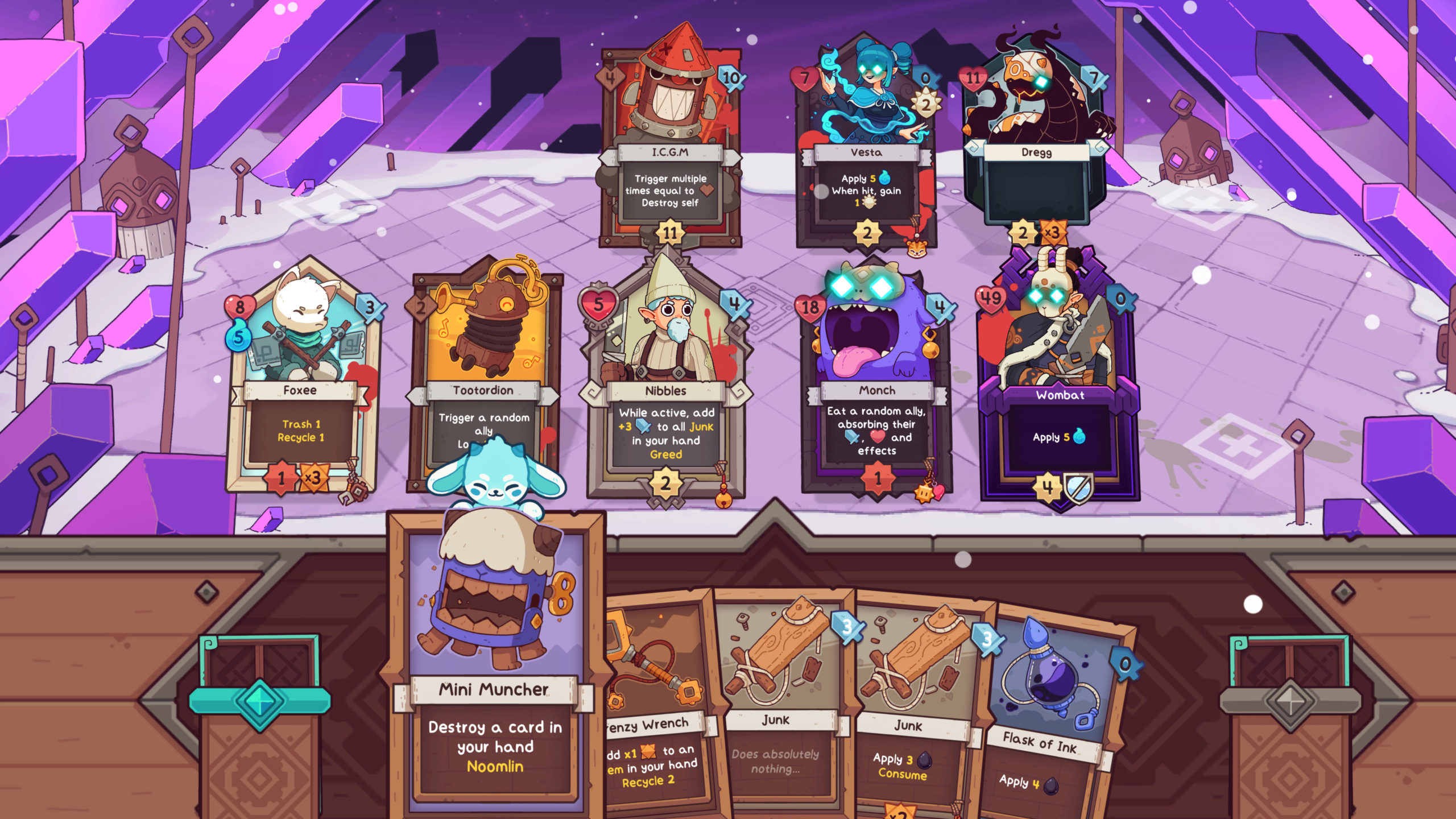
In my first win I had this companion “Monch”, who’s basically a labrador. Monch was the crutch that held my first win together; I’d given them everything, cackling madly to myself as they wiped the floor with every threat put in front of me. He carried me all the way to the Frost Guardian and, seeing him for the first time, Monch bent him over his knee while the rest of my team went to grab complimentary refreshments. After that my leader became the new Frost Guardian. I would now have to take him and, more frighteningly, Monch, down. What’s worse, all of the companions acting as minions for the new Frost Guardian are out of the card pool, so I couldn’t even use them on my next attempt.
So yeah, the developers make you screw yourself over for future runs. And more than anything else, this was what hooked me right in. Trying to unseat the tyrant that I brought to ascension while trying to unlock the remaining secrets the game had waiting for me.
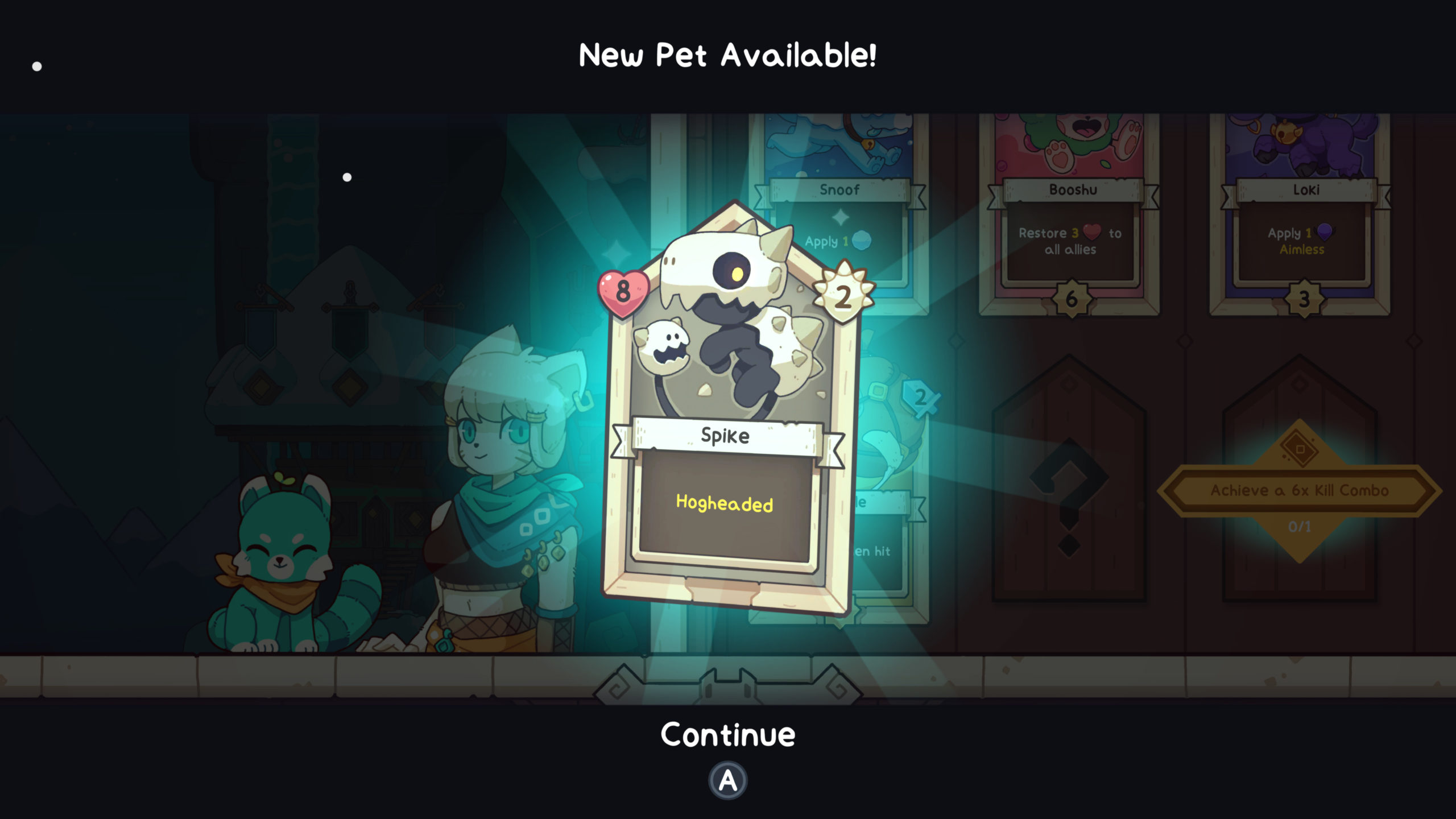
Unfortunately, holding on to unlock those secrets might test your patience. Many of your runs in Wildfrost will not be fair. Some players enjoy the challenge of overcoming a difficult game that doesn’t care about holding their hand, and that’s fine. However, when you aren’t given the tools to even possibly succeed and some skewed balancing can force a loss without telegraphing it, then the game isn’t respecting your time. At the start of a run the spread of leaders that you can select from will have traits that will change each time. Sometimes the game may offer you three total losers who, frankly, shouldn’t have been allowed to graduate from leader university. It’s not a huge deal as you can just throw the run if it’s really that bad, but being forced to lose makes me squirm.
Are the complaints reason enough to avoid Wildfrost though? Nah, it’s really great. Yes, it will occasionally kick you in the shins, and like all games of this type, it’s charms will last about as long as it takes for you to ‘solve’ the game and beat it. Developers Deadpan Games and Gaziter have put together all the right ingredients for a stellar roguelike-deck-building experience, and if you’re a fan of the genre or interested in seeing what the fuss is about then Wildfrost is certainly worth a look. It’s pretty cool (ICE JOKE!)
